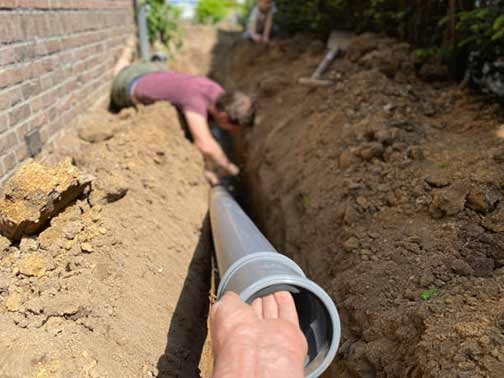
If you are thinking of replacing your main sewer line but are eager to know how long the project will take, you are in the right place. This article explains the various factors that determine the duration of a sewer line replacement.
How long does sewer line replacement take?
There is no fixed period of time for how long it will take. According to RPM Reliance, a lot depends on whether you are replacing a section of the sewer system or the entire line. The type of repair method used also plays a role in the duration of the project.
So, do you plan to do a partial replacement or a complete replacement of your sewer line? The right answer depends on the type of sewer problems in your home. Here are the different scenarios in which you might require a partial or complete replacement of your sewer line.
- Partial sewer line replacement
Choose partial replacement if:
- The damage is localized; only a section of the sewer line has extensive cracks, fractures, or evidence of tree root damage. A partial replacement is also the right choice for a bellied section of sewer line that needs to be restored to its proper slope.
- The problem in the sewer line is more than what can be fixed using spot repair, but not big enough to require complete line replacement. In other words, you need a robust solution but not a complete overhaul.
- Complete sewer line replacement
Choose complete replacement if:
- There is widespread damage that affects up to 50% of the line. The cost of partial replacement for a sewer line where 50% or more of the line has serious problems is a little lower than the cost of a complete replacement. In this instance, it is better to replace the entire sewer line.
- There are systemic issues in the sewer line due to improper installation or use of substandard materials. Only a complete replacement can solve this problem. A partial replacement will only force you to do the job a second time.
- The sewer line has reached the end of its service life, or there are outdated materials in the line, such as lead, clay, or galvanized steel pipes. These older materials are prone to cracking, and repairing them makes no economic sense.
The type of sewer line repair method
The second factor that determines the duration of a sewer line replacement project is the type of repair method you choose. Speaking very broadly, there are two sewer line replacement methods: trenchless repair methods and traditional excavation methods.
- Trenchless sewer line repair
This relatively new method of sewer line replacement uses unique technologies that allow the sewer line to be repaired without digging it up. It avoids the cost and messiness of excavating buried pipes. Since it doesn’t require extensive digging, this method takes less time.
Trenchless sewer line repair can be completed in a few hours to a couple of days. The exact length of time the operation will take depends on:
- The length and condition of the pipe being repaired. Pipes with extensive damage take longer to fix.
- The presence of obstacles like utility lines, large rocks, and tree roots in the area where the sewer line is located.
- The level of ease or difficulty with which the sewer line can be accessed. If there are concrete structures or paved surfaces in the area, the job will take longer to complete.
- The type of trenchless repair method used and the curing agent employed. This determines how quickly the resin will set.
- Traditional excavation method
This is the age-old method of sewer line repair. To overhaul the line, a trench is dug in the area directly above the entire length of the sewer line. This makes it possible to retrieve the entire sewer line before installing a new one in its place.
Due to the work involved, traditional sewer line repair takes longer. Typically, you can expect the job to take 3-7 days. Factors that determine the exact duration of the project include:
- The types of structures in the area – sidewalks or paved street surfaces – can influence the ease or difficulty of the excavation efforts.
- The type and extent of sewer line damage play a role. Collapsed sewer lines or lines with extensive corrosion take significantly longer to extract.
- The type of pipe material also matters. Heavy materials such as cast iron take more time to retrieve due to the difficulty in handling them.
- The depth of the buried pipe is another factor because it determines how long the excavation will take and how difficult it will be to remove the old pipe.
To conclude, how long does sewer line replacement take? It can take as short as a few hours and as long as 7 days. For an exact estimate of how long it will take to replace your sewer line, get a professional plumber to camera inspect the sewer line.

